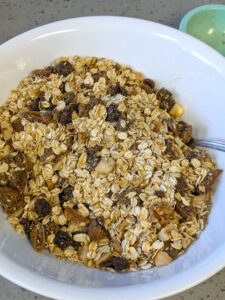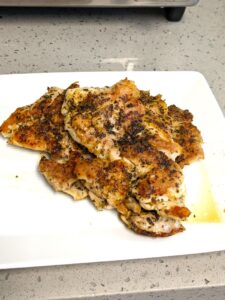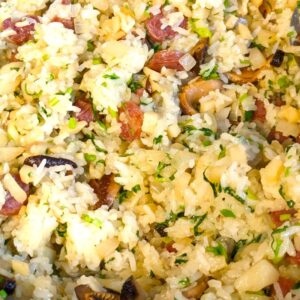I don’t know anyone that is born and raised in Hawaii that doesn’t love a Spam musubi or crave it when they are away from the islands. Spam is one of those things that I don’t plan on giving up anytime soon despite my goals of trying to eat healthier to avoid chronic health conditions as I age. Thus, Healthier Spam Musubi is my go-to when making musubis for a potluck or for my son’s field trip lunches.
It has to be Spam
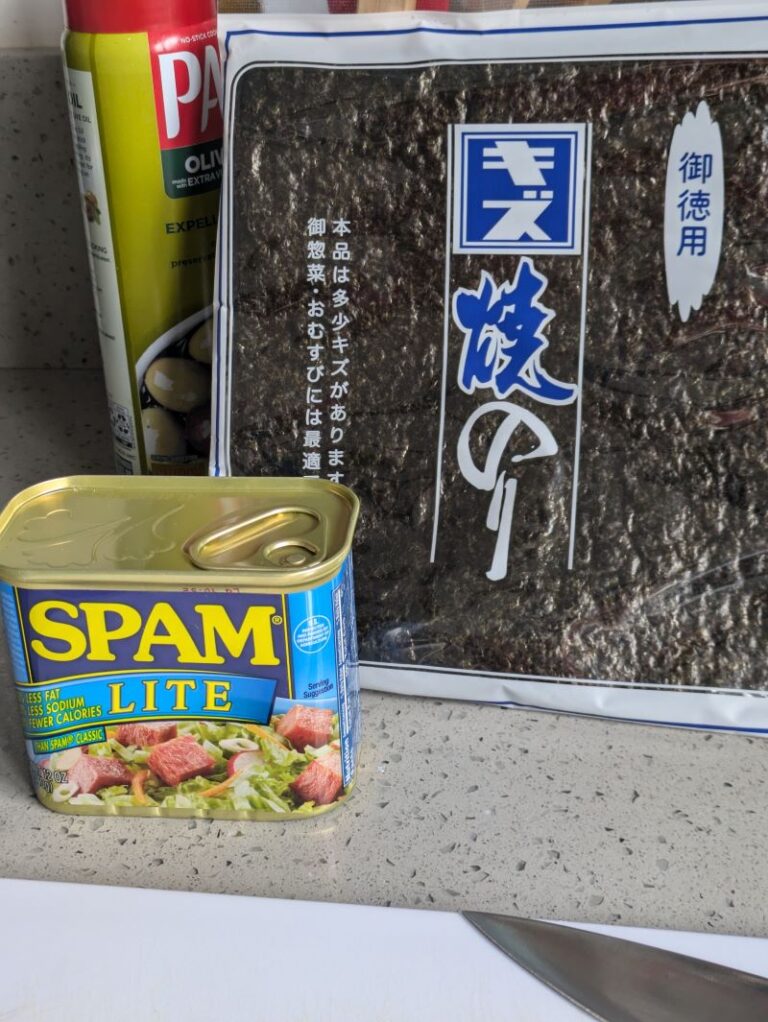
I’ve tried other types of luncheon meat loaves in my life and nothing compares to Spam. I don’t quite know what it is about the flavor and texture, but Spam has just got it right.
Why Spam Lite?
Over time, Spam Lite has become the staple version in my kitchen. Spam Lite has less fat and less salt compared to all the other versions. Even the kids don’t really care that Spam Lite is different from original or that it doesn’t have the teriyaki sauce that many restaurants and recipes coat the Spam with while cooking!
Tips for making healthier Spam musubis
The Rice
Genji Mai medium grain brown rice is the best brown rice that I have eaten. The texture and consistency is the closest to white rice compared to the rest. It sticks together well when using it for musubi or sushi.
The Nori/Seaweed
Use sushi nori for making Spam musubis. While you could technically use Korean-style roasted laver used for gimbap/kimbap, it has sesame oil that is not ideal for Spam musubi. You want to be able to hold the musubi in your hand without any wrapper and not get greasy eating it.
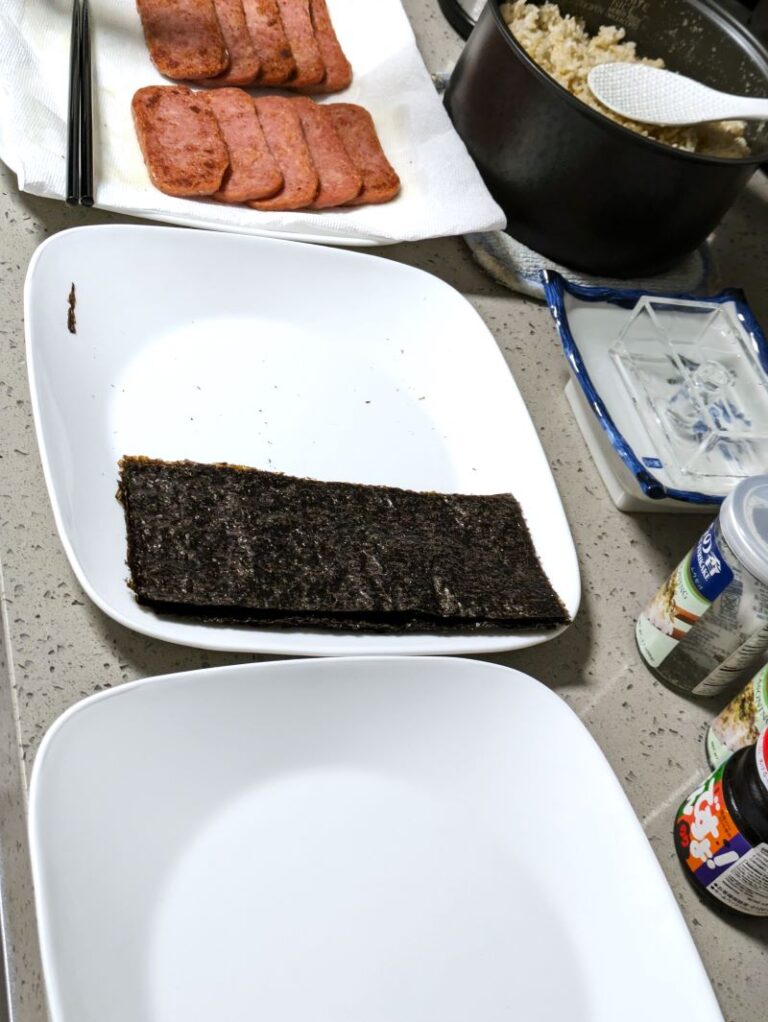
Also, don’t forget to cover the whole musubi with seaweed. I like to think it’s a little healthier that way. Another benefit is that it helps the kids keep their hands from getting sticky from the rice!
Wrapping it to go
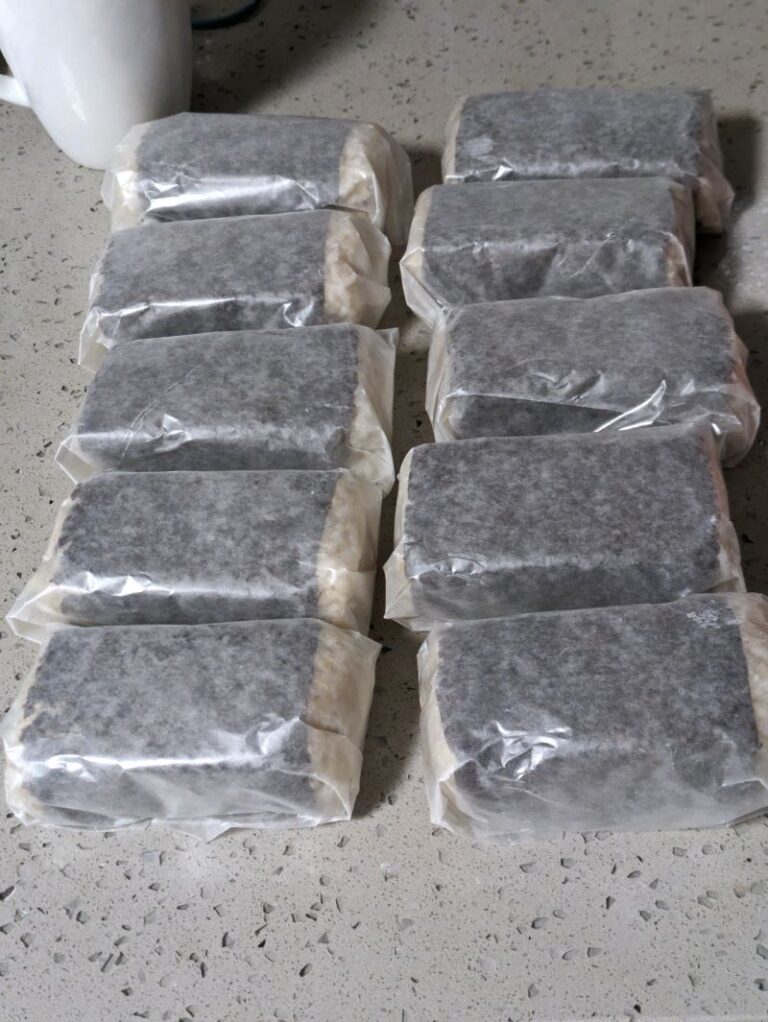
I am a big fan of wrapping Spam musubis in wax paper for field trips, the park, or long airplane rides. (Yes, this is the staple lunch whenever we travel from Hawaii to the mainland! Keeps well on the plane and helps us to save money.)
Kids often have a hard time dealing with plastic wrap. The wax paper comes off easily, gives the kids a great way to hold the musubi without touching the nori, and it seems like less of a mess when we’re done eating. If I make musubis with different toppings (i.e., furikake, egg, etc.), I can write the topping on the wax paper itself so everyone knows what they’re getting.
Please let me know if you need any other detailed tips on how to make these Healthier Spam Musubis!
Don’t forget to try these other local Hawaii recipes to change up your regular cooking routines.
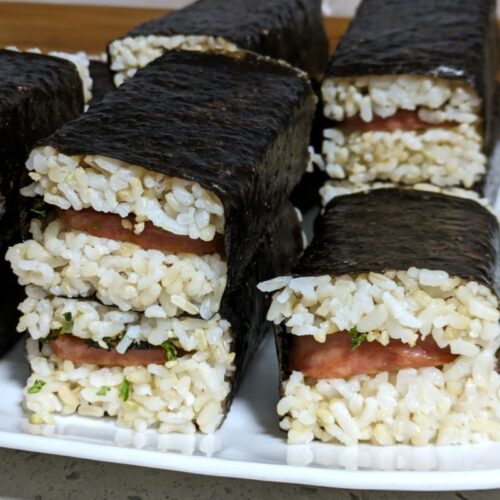
Healthier Spam Musubi
Equipment
- 1 electric rice cooker or 4-quart pot
- 1 large cutting board
- 1 chef's knife
- 1 10" saute pan or 10" frying pan
- 1 stainless steel mesh splatter screen optional
- 3 large plates
- Paper towels
- 1 spam musubi maker
- 1 medium bowl or other dish that the spam musubi maker fits into
- 1 rice paddle
Ingredients
- 3 cups raw Genji Mai medium grain brown rice or raw medium grain white rice (4 rice cooker measuring cups)
- 3 cups water (4 ½ cups if cooking on a stove top)
- 1 12-ounce can Spam Lite
- olive oil or canola oil spray or 2 tablepoons olive oil or canola oil
- 5 large sushi nori (seaweed) sheets (about 0.5 ounces)
- furikake optional
Instructions
Cooking Spam Musubi Ingredients
- Cook rice with rice cooker: add Genji Mai brown rice to the inner rice pot and wash/drain several times so water is less murky and looks almost clear. Fill with cooking water and place inner pot to rice cooker. Close and cook following the manufacturer's instructions.
- Remove Spam Lite from the can and place on a cutting board with the largest flat side down. Cut the spam into 10 slices.
- Heat saute pan or frying pan on medium heat. Add oil spray or oil to the pan, coating the pan with oil. Add 4 to 5 slices of spam to the pan and cook for 2 to 2 ½ minutes per side.
- Place cooked spam on a large plate lined with paper towels to drain some of the oil. Cook the remaining spam in one or two batches.
Preparing Musubi Making Station
- Cut the sushi nori sheets in half so the width of the nori sheet is about the same length as the spam slice. Place on a clean large plate.
- Put water in a bowl and place the spam musubi maker in the water. (This helps minimize the rice sticking to the mold.)
- When the rice is done cooking, fluff the rice with the rice paddle. (This releases some steam and makes it a little easier to handle the rice when making the musubis.)
- Set up your counter or a table with the cooked rice, plate of cooked spam, seaweed plate, bowl with the spam musubi maker, and the last large plate (for finished musubis).
Making Musubis
- Put one piece of nori on the empty half of the nori plate. Grab the rectangle musubi mold part, let any excess water drip off it, then place it in the center of the nori so the mold is touching both edges of the nori.
- Get a rice paddle full of rice and put it in the bottom of the mold. Spread the rice out over the bottom to make it easier to press with the top of the mold.
- Take the top of the mold and put it into the mold, pressing it down onto the rice. Remove the top and put it back in the bowl of water. Optional: you can add furikake or other toppings onto the rice.
- Place one slice of cooked spam onto the pressed rice.
- Take another rice paddle full of rice and place the rice on top of the spam so it fills the mold.
- Take the top of the mold from the water and put it into the mold, pressing it firmly onto the rice. After pressing the top down, continue to press the top while lifting the mold up and away from the nori and rice. Remove the top from the top layer of rice and put the mold and top back into the bowl of water.
- Lift one side of the nori up the side and over onto the rice, pulling slightly so the nori is tight against the rice. Wet one finger with water from the bowl with the musubi mold and wet the edge of the nori on the other side. Lift the second side of nori up and over so it is completely wrapped around the rice and press it down onto the first side of the nori.
- Repeat musubi making steps until you run out of spam. You will have a little extra rice that you can put in the fridge or freezer to eat later.





